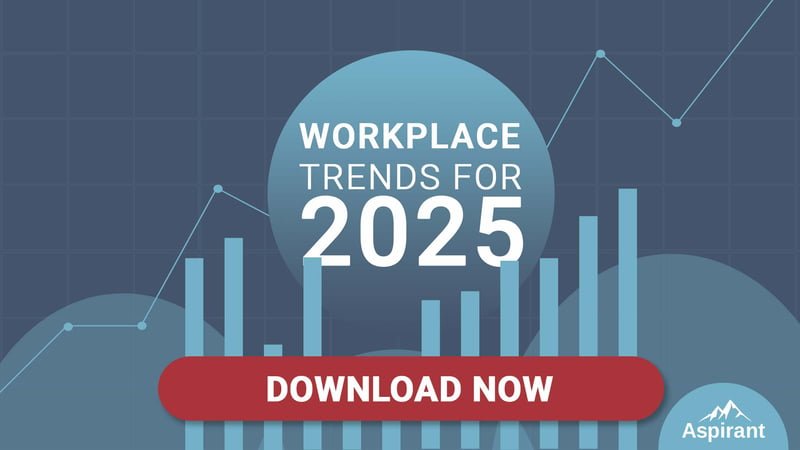by Aspirant PR Team
September 2, 2024
It's 2005. What if you had known that within 20 years:
For the last 10 years, we have dealt with an accelerating pace of change in just about every facet of business, from the globalization of markets to increased speed and diversity of competition, and from changing customer demands to shifting employee requirements.
This is why Aspirant has published a new eBook, Organization Effectiveness for 2025 — Are You Ready? How the World of Work is Changing, written by Aspirant Vice President Judy Johnson, Ph.D. This book helps set the stage for what’s to come and how you can change and prepare your organization to be effective and win over the next decade.
From futurists to technical experts, everyone agrees the world of work is going to change by 2025. That is not revolutionary news, as work constantly evolves and technology accelerates that evolution.
The bad news about these changes? The pace and extent of change is only going to continue.
And the good news? We can see the changes coming and can prepare accordingly.

So why is preparing your organization for 2025 a priority?
Companies who prepare for future shifts are the ones that survive and thrive. There are a handful of mega trends that cut across all markets; they are consistently discussed and commonly agreed on by strategists across disciplines. When taken together, however, they show a drastically different future state of work, and also create a compelling reason to take action today.
Aspirant’s Organizational Effectiveness team has analyzed social, business, technology, and management trends and found unique elements necessary for companies to successfully compete in the next decade. To give a sense of the research contained in the eBook, here's 3 of the 10 trends that will challenge an organization's effectiveness in 2025:
Reputation Over Revenue: Employees, customers and investors want social responsibility, environmental accountability and increasingly social activism from companies.
Diversified Power: In 2025, organizational power will neither sit solely with company executives at corporate headquarters, nor with the leaders of the largest business units.
Career Path Reshaped: The employees’ career path will no longer be vertical, or even-staggered vertical movement.
